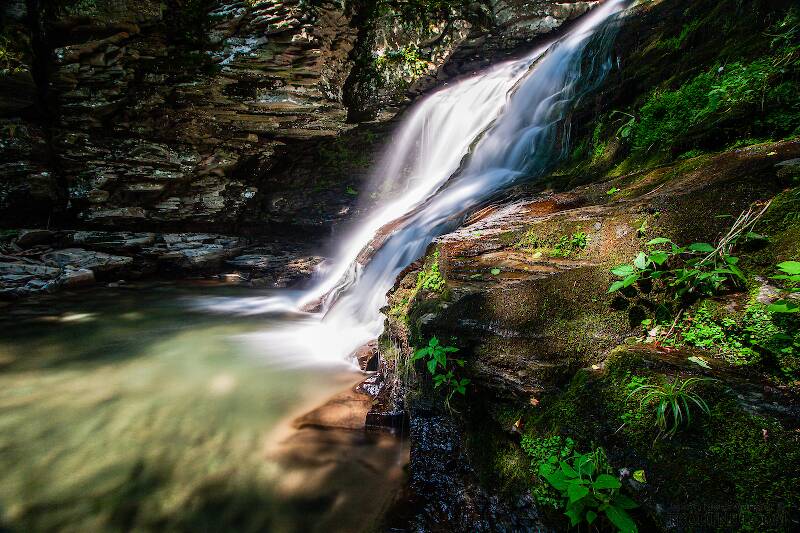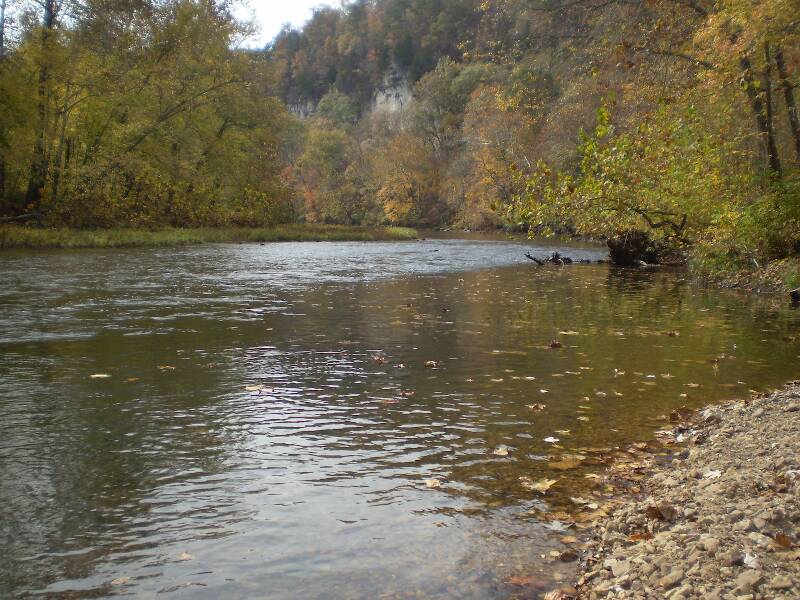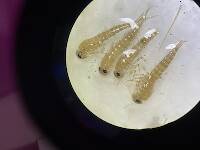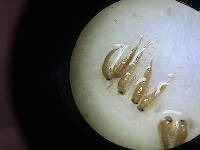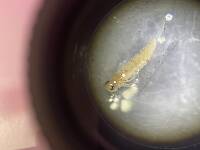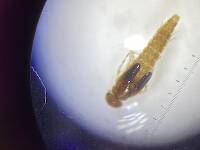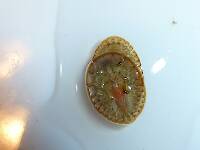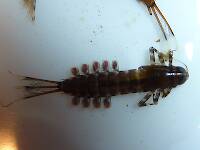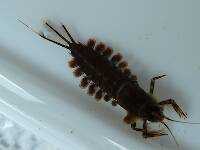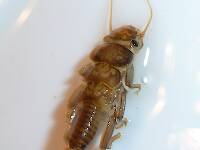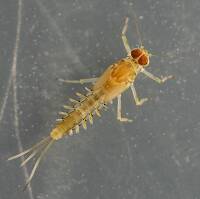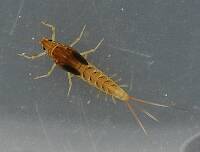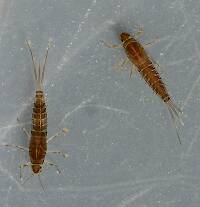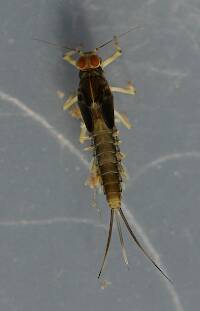
Blue-winged Olives
Baetis
Tiny Baetis mayflies are perhaps the most commonly encountered and imitated by anglers on all American trout streams due to their great abundance, widespread distribution, and trout-friendly emergence habits.
Featured on the forum
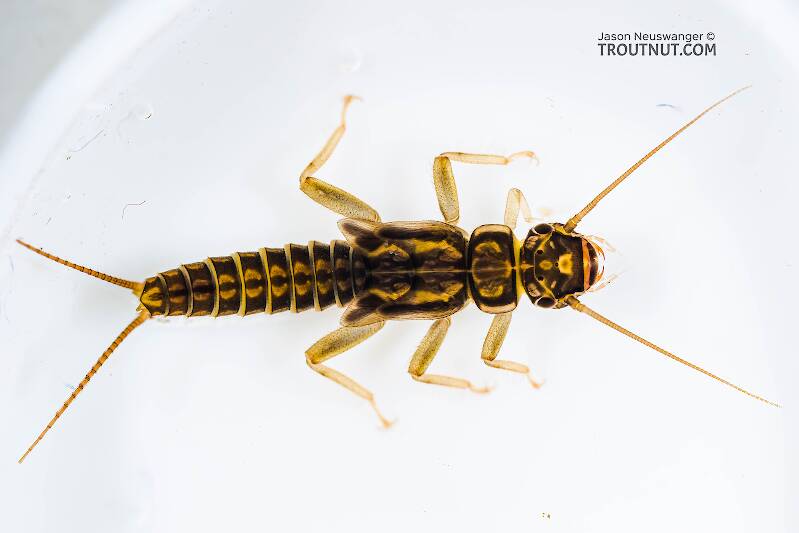

Troutnut is a project started in 2003 by salmonid ecologist Jason "Troutnut" Neuswanger to help anglers and
fly tyers unabashedly embrace the entomological side of the sport. Learn more about Troutnut or
support the project for an enhanced experience here.
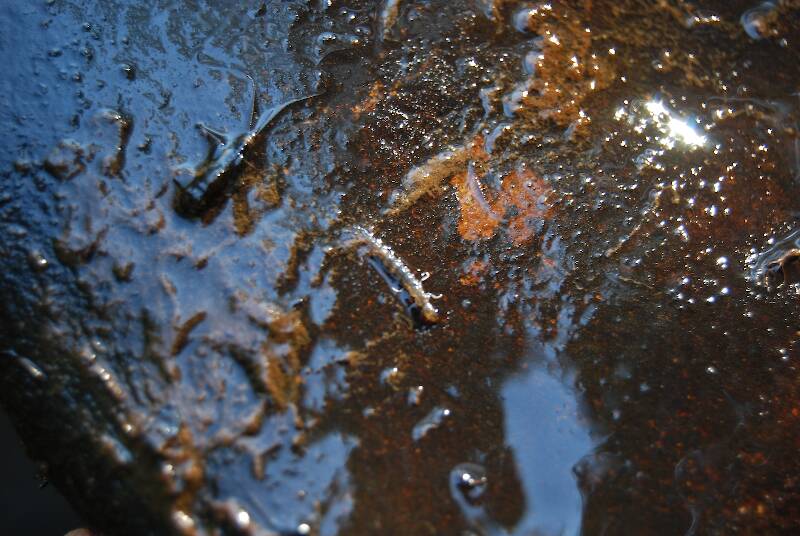
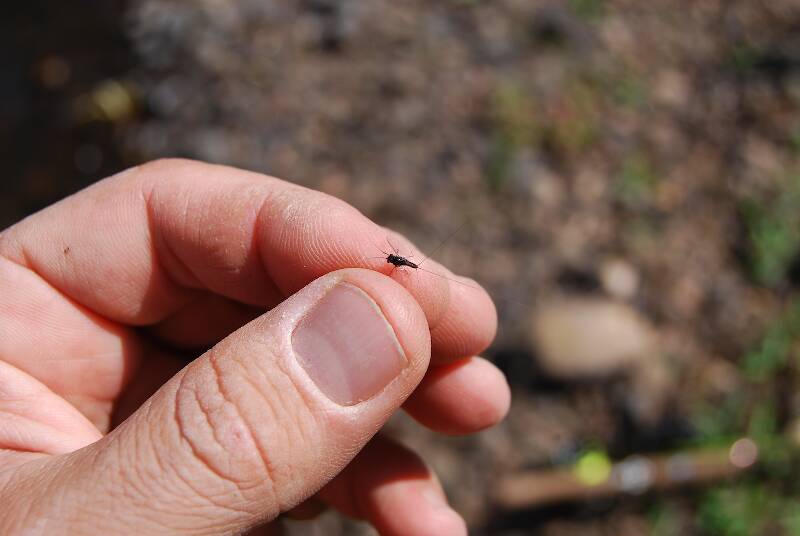
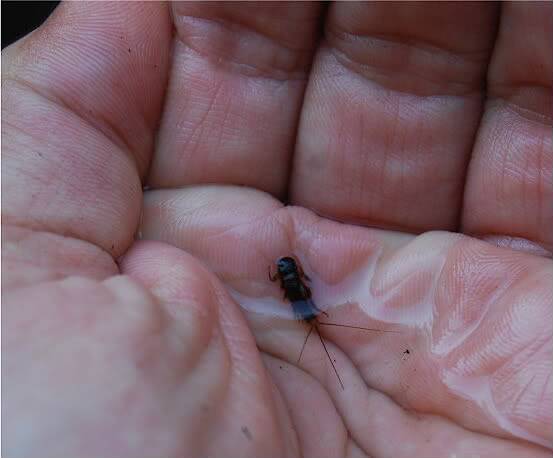
TSR on May 26, 2010May 26th, 2010, 6:38 am EDT
Hello just discovered this excellent website.
I live in Mexico and just started last year to fly-fish...
They were collected a couple weeks ago, and for the first time saw a hatch emerging around noon... (And I used to think the only time to fish for trout was sunrise...)
Could you help me identify this nymphs? adults? of mayfly?
Thanks in advance...
I live in Mexico and just started last year to fly-fish...
They were collected a couple weeks ago, and for the first time saw a hatch emerging around noon... (And I used to think the only time to fish for trout was sunrise...)
Could you help me identify this nymphs? adults? of mayfly?
Thanks in advance...
Starting to fly-fish!
Taxon on May 26, 2010May 26th, 2010, 8:09 am EDT
TSR-
Yes, your adult is a mayfly. It appears to be a male imago of family Leptohyphidae, and probably of genus Tricorythodes. I might be able to narrow it down further if I knew which Mexican state you are from.
Your mayfly nymph may be of family Baetidae and genus Baetis, as it appears to have a middle tail only about 1/4 as long as the outer two. However, it is very difficult to identify when there is just enough water on it for the body appendages to stick to one another and to the rock on which it rests.
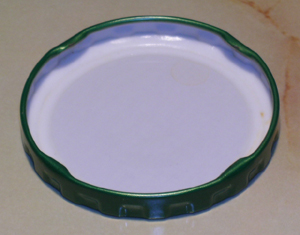
Next time, take along a jar lid with a white background inside it. Place the lid on a flat surface, put the nymph to be photographed inside it, and put enough water in it to fully cover the nymph. This will allow all the body parts to show themselves, and make identification much more likely.
Yes, your adult is a mayfly. It appears to be a male imago of family Leptohyphidae, and probably of genus Tricorythodes. I might be able to narrow it down further if I knew which Mexican state you are from.
Your mayfly nymph may be of family Baetidae and genus Baetis, as it appears to have a middle tail only about 1/4 as long as the outer two. However, it is very difficult to identify when there is just enough water on it for the body appendages to stick to one another and to the rock on which it rests.

Next time, take along a jar lid with a white background inside it. Place the lid on a flat surface, put the nymph to be photographed inside it, and put enough water in it to fully cover the nymph. This will allow all the body parts to show themselves, and make identification much more likely.
TSR on May 26, 2010May 26th, 2010, 1:49 pm EDT
Thanks Roger,
Great idea, the one of taking along a lid!
I picked up the specimens from a small creek up in the Sierra Madre Occidental, in Jalisco.
Also I have another photo of the dark nymph, maybe it will aid in identifying it.
Regards
Ted
Great idea, the one of taking along a lid!
I picked up the specimens from a small creek up in the Sierra Madre Occidental, in Jalisco.
Also I have another photo of the dark nymph, maybe it will aid in identifying it.
Regards
Ted
Starting to fly-fish!
TSR on May 26, 2010May 26th, 2010, 1:52 pm EDT
How about the white one that sits beside the dark nymph? Roger? Anyone?
Starting to fly-fish!
Taxon on May 26, 2010May 26th, 2010, 6:03 pm EDT
Ted-
Your 3rd photo of the mayfly nymph doesn't look like a Baetid, but I really can't see it well enough to identify what it is. However, now that I know you live in the state of Jalisco, I can tell you that your Leptohyphid adult is likely Leptohyphes brunneus, so that might be what your nymph is as well. If not, your nymph is likely either Leptophlebiid Thraulodes brunneus or Traverella albertana.
As to the whitish one in the 1st photo, it may be a free-living caddisfly larva, or perhaps an aquatic beetle larva, but once again, I just can't see it well enough to say for sure. Just use a jar lid to photograph them, it will make a whole world of difference.
Your 3rd photo of the mayfly nymph doesn't look like a Baetid, but I really can't see it well enough to identify what it is. However, now that I know you live in the state of Jalisco, I can tell you that your Leptohyphid adult is likely Leptohyphes brunneus, so that might be what your nymph is as well. If not, your nymph is likely either Leptophlebiid Thraulodes brunneus or Traverella albertana.
As to the whitish one in the 1st photo, it may be a free-living caddisfly larva, or perhaps an aquatic beetle larva, but once again, I just can't see it well enough to say for sure. Just use a jar lid to photograph them, it will make a whole world of difference.
Motrout on May 27, 2010May 27th, 2010, 11:12 am EDT
Use a Pheasant Tail to imitate the dark one and a Hare's Ear to imitate the light colored one.
I don't know what they were called, but then I'm not sure that matters a bit.
I don't know what they were called, but then I'm not sure that matters a bit.
"I don't know what fly fishing teaches us, but I think it's something we need to know."-John Gierach
http://fishingintheozarks.blogspot.com/
http://fishingintheozarks.blogspot.com/
Entoman on Jan 26, 2011January 26th, 2011, 7:03 pm EST
I think the nymph in your hand is a Heptaginid. Hard to tell from the photo which genus other than it doesn't belong to the Epeorus or Ironodes because of the three tails. The three giveaways are the large (blunt rounded) head appearing to be the widest part of the body, what appears to be eyes mounted on the dorsal surface, and finally the distance from head to the end of the wingpads is greater than from end of wingpads to abdomen. The appearance of the gills throws me a little (look almost feathery?)as well as the legs which look almost like an Ephemerellid. But they(Legs)are stout enough and the three long hairless tails are being held in the typical stiff and Splayed Heptagenid manner. I don't have access to a monograph that lists Mexican Ephemeroptera so that's the best I can do
The white creature on the rock looks like a caddis larvae of the "free living" category as opposed to those that build cases or spin nets. The leg placement is much more spread out than I'm used to seeing and the color(which is not always a good determenent)threw me. Frankly, I thought it so odd looking at first glance that I thought it could be a beetle larva of some type except they usually exhibit more taper from the middle sections of the abdomen. Still could be though.
As to the winged fly - it looks like a male spinner of the Leptohyphidae family though I'd need a better look at the wings to be sure. If the sample were taken North of Mexico I'd be more positive.
The white creature on the rock looks like a caddis larvae of the "free living" category as opposed to those that build cases or spin nets. The leg placement is much more spread out than I'm used to seeing and the color(which is not always a good determenent)threw me. Frankly, I thought it so odd looking at first glance that I thought it could be a beetle larva of some type except they usually exhibit more taper from the middle sections of the abdomen. Still could be though.
As to the winged fly - it looks like a male spinner of the Leptohyphidae family though I'd need a better look at the wings to be sure. If the sample were taken North of Mexico I'd be more positive.
"It's not that I find fishing so important, it's just that I find all other endeavors of Man equally unimportant... And not nearly as much fun!" Robert Traver, Anatomy of a Fisherman
Entoman on Jan 26, 2011January 26th, 2011, 7:23 pm EST
Roger -
Just read your post after I posted mine! Don't know how I missed it. What prompted me was speculation it was a Baetid. No way. A Leptophlebid? Hmmm... No you have me thinking. Those gills and overall look of the body, legs too for that matter. But I'm having trouble with the head and tails. Leptophlebids just don't hold them (tails) that way and the lack of setea on them bothers me. I know Leptophlebid heads can vary substantally, some even with tusks! But this one looks pretty big.
Regards,
kurt
Just read your post after I posted mine! Don't know how I missed it. What prompted me was speculation it was a Baetid. No way. A Leptophlebid? Hmmm... No you have me thinking. Those gills and overall look of the body, legs too for that matter. But I'm having trouble with the head and tails. Leptophlebids just don't hold them (tails) that way and the lack of setea on them bothers me. I know Leptophlebid heads can vary substantally, some even with tusks! But this one looks pretty big.
Regards,
kurt
"It's not that I find fishing so important, it's just that I find all other endeavors of Man equally unimportant... And not nearly as much fun!" Robert Traver, Anatomy of a Fisherman
Jmd123 on Jan 27, 2011January 27th, 2011, 8:52 am EST
My first impression of the dark nymph in the hand is that it is a heptageniid, because of the flat-looking head. Were the eyes on top of the head looking upward? Can't tell much more from the photo...
Ted, what manner of trout are you catching down there in Mexico?
Jonathon
Ted, what manner of trout are you catching down there in Mexico?
Jonathon
No matter how big the one you just caught is, there's always a bigger one out there somewhere...
TSR on Mar 8, 2011March 8th, 2011, 12:15 pm EST
Jonathon,
The species of trout we fish in the little rivers of the Sierra Madre Occidental (state of Jalisco, Mexico) is rainbow trout. The streams are very small creeks and there is a lot of vegetation and foliage over them.
Thanks for your aid in identifing the bugs... I just went fishing last week and saw the same kind.
The species of trout we fish in the little rivers of the Sierra Madre Occidental (state of Jalisco, Mexico) is rainbow trout. The streams are very small creeks and there is a lot of vegetation and foliage over them.
Thanks for your aid in identifing the bugs... I just went fishing last week and saw the same kind.
Starting to fly-fish!
PaulRoberts on Mar 9, 2011March 9th, 2011, 10:45 am EST
The poor images and being Mexican, I dunno...
But my gestalt stab is:
A Heptageniid -with the fairly feeble legs for a clinger it might be Heptagenia/Nixe/Lucrocuta.
The pale larvae struck me at first as a Sialid. But it's probably a caddis larva, as others suggest. My guess is a Philopotomid, free of its net. Dolophilodes and Wormaldia are two I have in upper reach streams here in Colorado.
But my gestalt stab is:
A Heptageniid -with the fairly feeble legs for a clinger it might be Heptagenia/Nixe/Lucrocuta.
The pale larvae struck me at first as a Sialid. But it's probably a caddis larva, as others suggest. My guess is a Philopotomid, free of its net. Dolophilodes and Wormaldia are two I have in upper reach streams here in Colorado.
Entoman on Mar 9, 2011March 9th, 2011, 4:18 pm EST
Hey Paul,
Mayfly nymph - My thoughts as well (expressed earlier). But we can't discount Taxon's opinion. His knowledge and skill at identifying obscure bugs is very impressive. Unfortunately, I originally answered this topic before I noticed his input. (I am guilty of missing competent answers often if the thread goes beyond a few posts). Anyway, I recently saw some photos somewhere on a reliable site of a nymph in the crawler group (can't remember if it was an Ephemerellid or Leptophlebid) that had a blunt head that would lead a North American to assume it was a Heptagenid at first glance. When I first saw it I was going to post a link, but got distracted. Now I can't find it (figures).
Mayfly adult - Leptohyphidae? Possibly, but not so sure about Tricorythodes. The size and color is right, but I wonder if we are again using a North American lens. Looking closely, the critter has a very wide head and very prominent antennae that look to be at least 3/4 body length. Also the abdomen/thorax ratio looks more like the typical Ephemerillid and not the greatly exaggerated thorax of a Tricorythodes. However, there maybe other genera of Leptohyphidae in Latin America that don't conform to Tricorythodes characteristics, so who knows?
Caddis Larva? - Pretty confident we at least have the order right. (Wow, aren't we good). But it's impossible to tell much further from a bug crawling on a rock far enough away where the segmentation looks like a string of pearls and a couple of legs don't even show. Also the rear legs look to be set pretty far back, and are those vestigial tails?. This critter "bugs" me.
Regards,
Kurt
Mayfly nymph - My thoughts as well (expressed earlier). But we can't discount Taxon's opinion. His knowledge and skill at identifying obscure bugs is very impressive. Unfortunately, I originally answered this topic before I noticed his input. (I am guilty of missing competent answers often if the thread goes beyond a few posts). Anyway, I recently saw some photos somewhere on a reliable site of a nymph in the crawler group (can't remember if it was an Ephemerellid or Leptophlebid) that had a blunt head that would lead a North American to assume it was a Heptagenid at first glance. When I first saw it I was going to post a link, but got distracted. Now I can't find it (figures).
Mayfly adult - Leptohyphidae? Possibly, but not so sure about Tricorythodes. The size and color is right, but I wonder if we are again using a North American lens. Looking closely, the critter has a very wide head and very prominent antennae that look to be at least 3/4 body length. Also the abdomen/thorax ratio looks more like the typical Ephemerillid and not the greatly exaggerated thorax of a Tricorythodes. However, there maybe other genera of Leptohyphidae in Latin America that don't conform to Tricorythodes characteristics, so who knows?
Caddis Larva? - Pretty confident we at least have the order right. (Wow, aren't we good). But it's impossible to tell much further from a bug crawling on a rock far enough away where the segmentation looks like a string of pearls and a couple of legs don't even show. Also the rear legs look to be set pretty far back, and are those vestigial tails?. This critter "bugs" me.
Regards,
Kurt
"It's not that I find fishing so important, it's just that I find all other endeavors of Man equally unimportant... And not nearly as much fun!" Robert Traver, Anatomy of a Fisherman
PaulRoberts on Mar 10, 2011March 10th, 2011, 10:46 am EST
Those widely splayed tails look like a clinger to me. It also looks a lot like Rythrogena. It even has the pale last tergite I've seen on high country Rhithro's here. I have a pic of one:
http://www.troutnut.com/topic/2413
Scroll down to the images.
In fact, if that stream is a high order stream, then a Philopotomid and Rhythrogena would fit.
Are we just dying to go fishing or what. Sitting here Talking about images of bugs we can barely see.lol
http://www.troutnut.com/topic/2413
Scroll down to the images.
In fact, if that stream is a high order stream, then a Philopotomid and Rhythrogena would fit.
Are we just dying to go fishing or what. Sitting here Talking about images of bugs we can barely see.lol
Entoman on Mar 10, 2011March 10th, 2011, 1:22 pm EST
Yep...
"It's not that I find fishing so important, it's just that I find all other endeavors of Man equally unimportant... And not nearly as much fun!" Robert Traver, Anatomy of a Fisherman
Quick Reply
Related Discussions
Topic
Replies
Last Reply
3
Oct 30, 2009
by Doublezz105
by Doublezz105
6
Apr 17, 2013
by Sayfu
by Sayfu
2
Mar 26, 2008
by Isidro
by Isidro

